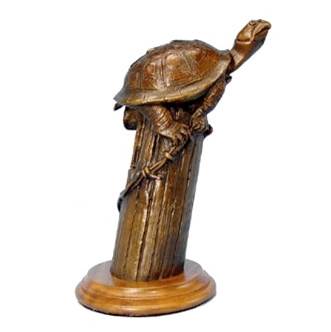It is the same within academic medicine. The top medical centers in terms of research funding, high quality care, and other resources got there through a lot of effort by a lot of people. UAB’s goal is to become the preferred academic medical center of the 21st century. To do that, we must transform.
 The process has begun
The process has begun
We have already started to lay the foundation for change, starting with my office. We engaged the AAMC’s senior director for Leadership and Talent Development, Kevin Grigsby, an expert on organizational development in academic medical settings. Kevin spent several days at UAB meeting with people in a variety of positions and asking very insightful questions in order to better understand our culture. The dean’s office should be able to strategically lead the School’s efforts and facilitate our growth. With feedback from Kevin and other ongoing efforts, we will redesign the structure and function of the dean’s office into a vehicle of leadership and service. We have also poured over data and come to hard realizations. Over the years, as NIH funding has dropped, so has UAB’s share of that funding. In 2005, UAB ranked 17th in the nation among schools of medicine for NIH funding; in 2013 we ranked 31st. The size of our faculty, who are responsible for competing for and receiving NIH funding, is the same as it was in 1999. We have been very active, but activity is not the same as growth.
Five areas of concentration
So, what are we going to do about it? We have already begun. As dean, Dr. Watts recognized this as well and began a process of growth with AMC21, and we will continue and build on the AMC21 strategic plan. Working with the Joint Operating Leadership (myself, Dr. Will Ferniany, CEO of the Health System, and Dr. Jim Bonner, president of the Health Services Foundation and chair of Radiation Oncology), we have created five task forces to examine and recommend changes in five areas: research infrastructure, financial investment, programs, people and culture. Their first reports are due in April.- To grow our research portfolio we must have a healthy, robust research infrastructure – everything from people to processes to facilities and equipment.
- Our financial investments must follow our values and support our mission. We will benchmark ourselves against other academic medical centers and identify efficiencies and new funding sources.
- What programs do we need to develop in order to be competitive for research funding, the advance of science and the development of patient care? Not just now, but in the future? We already have strong programs in molecular diagnostics, diabetes, health disparities research and cancer, to name a few. Informatics is a program we could strengthen. Three broad themes that will become increasingly important are personalized medicine, regenerative medicine and quality, safety and bioinformatics. You will continue to hear more about these areas in the future.
- People are our most vital component. People raise the turtle to the top of the fence post. We will build a strong plan to support the entire spectrum of the faculty life cycle: recruitment, professional development and retooling and retirement.
- Culture refers to the way we do business. Are there barriers to our success we need to remove? Are there new ways we can hold ourselves accountable? How can we be more effective? Culture is often the hardest element for an organization to change and it takes years, not months. Yet without a strong identity and a culture moving positively toward shared goals, strategies often fail. A reorganized, re-energized dean’s office will lead cultural change.
Reaching new heights
Transformation isn’t easy, and it might be uncomfortable at times. It will require all of us working together, and it will be worthwhile. We won’t impose artificial targets, like topping a magazine’s ranking. Our aim is to align our culture, values and investments of talent and resources to reflect a commitment to the highest levels of scholarship, discovery of new knowledge through scientific investigation and outstanding clinical care. This is a very focused goal, but the benefits extend to our work environment, our patients’ experience and an even greater impact on our community.If you haven’t seen a turtle on a fence post, stop by my office sometime. I have a bronze replica of a handsome box turtle, its head stretched far out of its shell, determined. He’s sitting squarely atop a round fence post, a strand of barbed wire curling up the post. It reminds me that success doesn’t happen in a vacuum, and many people have helped me get where I am today. It also reminds me that to whom much is given, much is required.
I look forward to working with each of you to transform the School of Medicine, to help us, collectively, reach new heights.